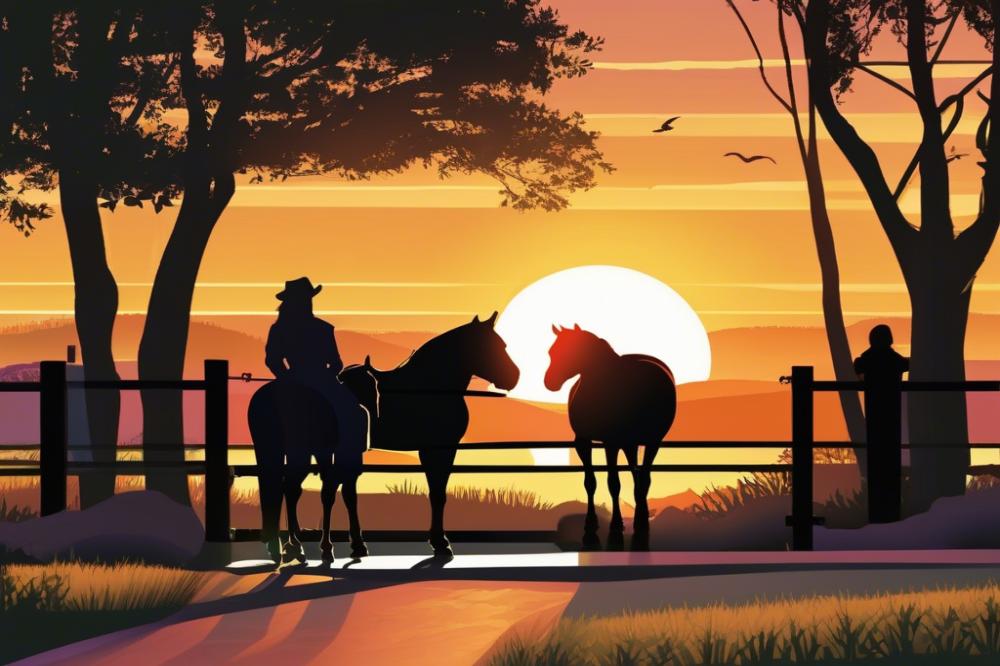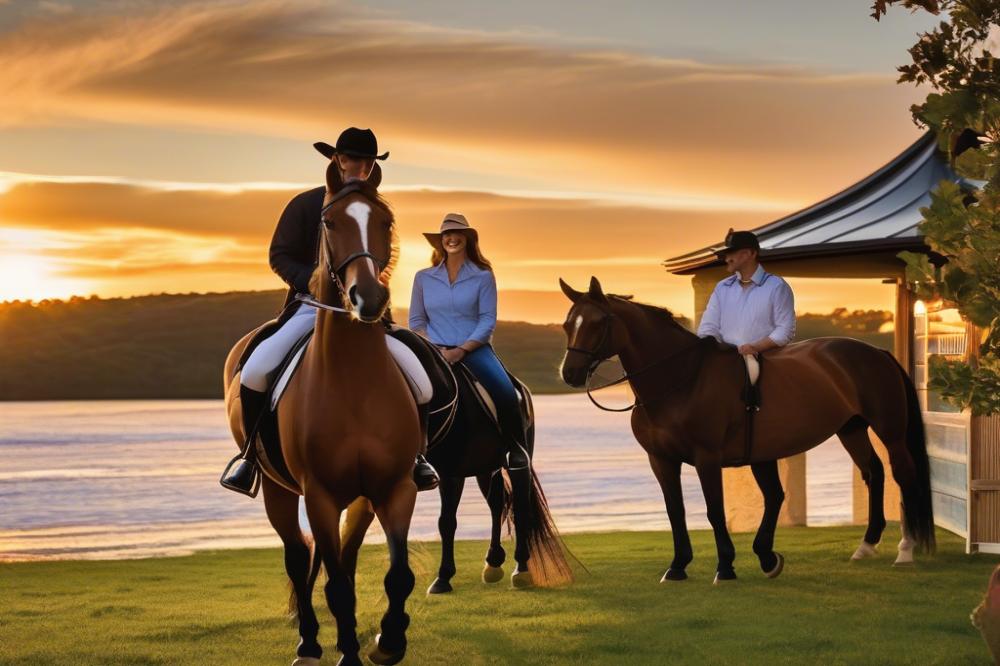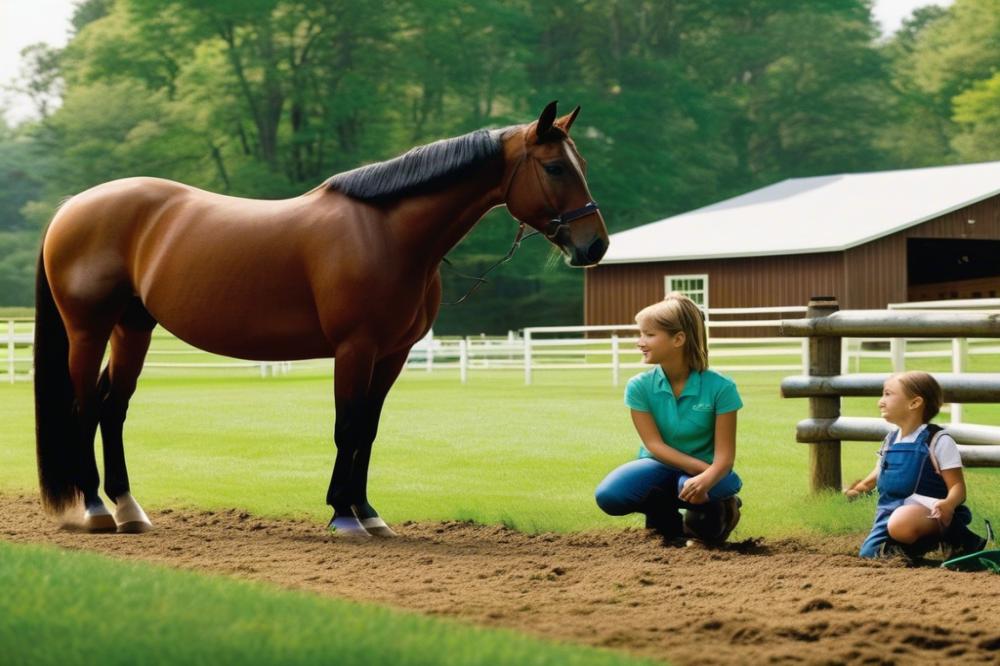Keeping Visitors Safe Around Your Horse and Preventing accidents
Horse ownership can be both exciting and overwhelming, especially for those experiencing it for the first time. With these majestic creatures comes a set of responsibilities that extends beyond basic care. Visitors, whether they are friends, family, or neighbors, must also be considered. This is crucial for creating a safe environment around your horse.
A variety of risks can arise when people interact with horses. horses, while generally gentle, can startle easily. They may kick or bite if they feel threatened. Additionally, visitors may not understand how to behave safely around these large animals. Therefore, accidents can happen quickly, sometimes with little warning.
This article aims to offer practical advice aimed at improving visitor safety around your horse. By following simple guidelines, you can significantly reduce the chance of accidents. Understanding horse behavior and implementing safety measures can make visits enjoyable and safe for everyone involved.
Understanding Equine Behavior

Basics of Horse Behavior
Horses are prey animals. This means their instincts often push them to react quickly to perceived threats. They have a strong flight response. When a horse feels scared, it may run away without warning. Factors like body language and environment heavily influence how a horse behaves. Each horse has its own personality, making some more friendly and others more nervous. Familiarity with these traits can aid in predicting how a horse may act in various situations.
Importance of Recognizing Signs of Stress or Aggression
A horse showing signs of stress may display certain behaviors. Ears pinned back indicate discomfort or fear. Similarly, a horse that stomps its feet could be agitated. Understanding these cues is vital for keeping everyone safe. Aggression can escalate quickly. It is crucial to recognize warning signs early to prevent potential accidents. Look for changes in posture, facial expressions, and vocalizations. Awareness of these signals helps in creating a safer visiting environment.
How to Educate Visitors About Horses
Teaching visitors about horse behavior is essential. Start with basic information on how to approach a horse calmly. Use soft voices and gentle movements to avoid startling them. Explain the importance of respecting a horse’s space. It’s vital for visitors to know never to walk directly behind a horse. This position can be dangerous. Consider hosting brief demonstrations to showcase safe handling techniques. Engaging videos or pamphlets can also convey key safety points effectively. The more informed visitors are, the safer interactions with these animals will be.
Visitor Guidelines

Establishing clear rules for visitors around horses is crucial. Unfamiliarity with horse behavior can lead to accidents. Visitors should always stay calm and maintain a safe distance from the animals. Make sure to provide a brief orientation before anyone approaches the horses. This helps create a safer environment for both the horses and visitors.
Supervision is key when visitors are near horses. Adults in charge should monitor the interactions closely. Children, in particular, may not understand the risks involved. Having someone guide them can prevent unexpected movements that may startle the horses. Encourage a buddy system where visitors look out for each other.
Respectful interactions should be promoted at all times. Visitors must understand that horses have their own comfort zones. It is never appropriate to invade these spaces. Teaching gentle approaches can help visitors feel more confident. This, in turn, allows the horses to feel safe around people.
Signage is a useful tool to remind visitors of these guidelines. Placing clear instructions near entry points can catch their attention. Use simple language that everyone can understand. Icons can also help communicate the message effectively. Keeping reminders in sight can prompt visitors to act appropriately.
Lastly, reiterating the importance of treating horses as living beings is essential. These animals often respond negatively to loud noises or sudden movements. Visitors should refrain from running or shouting while in the vicinity. Encourage calm voices and slow movements to foster a peaceful atmosphere.
Handling and Training Horses
Using proper handling techniques is vital when working around horses. It promotes safety for both the handler and the animal. Always approach horses calmly and confidently. Avoid sudden movements that may startle them. This helps create a trusting environment.
Training plays a significant role in the relationship between horses and their owners. A well-trained horse is easier to manage and less likely to cause accidents. Owners should familiarize themselves with basic training methods. This knowledge is essential for understanding equine behavior.
Involving visitors in the handling process can be a great way to share the experience. However, supervision is key. Always supervise visitors closely when they are near a horse. Make sure they understand basic safety rules before they interact with the animal. This preparation helps make their experience enjoyable and secure.
Establishing a routine can also help create a safe environment. Horses thrive on consistency, and routines can calm them. Owners should practice handling their horses regularly. This way, they feel more in control and prepared for unexpected situations.
Visitors should never take the lead without guidance. Reinforcing boundaries establishes a secure space for both the horse and the visitor. Always remind them to speak softly and approach slowly. These practices build comfort and reduce stress for the horse.
Lastly, communication between horse and handler cannot be overemphasized. Observing body language can provide important clues about a horse’s state of mind. Owners should keep an eye on their horses’ reactions. Doing so can help prevent potentially dangerous situations before they arise.
Barn Safety and Environment
Safety Features to Consider in the Barn Area
Maintaining a safe barn is vital for visitors and horses. Consider installing non-slip flooring to reduce the risk of accidents. Good lighting is essential, especially in areas that may get dark. Fire extinguishers should be easily accessible and well-marked. Also, keep first aid kits stocked and within reach. These small changes can significantly improve safety.
Maintaining a Clean and Organized Barn
A tidy barn minimizes hazards. Pay attention to clutter. Tools should have designated storage spots, and hay should be stored properly to avoid fire risks. Regularly remove manure to maintain a pleasant environment. This practice not only keeps the barn looking nice but also makes it safer for everyone. Keeping pathways clear can prevent slips and falls.
Role of Signage to Communicate Safety Rules
Clear signage plays a key role in safety. Place signs that indicate areas of caution, such as “No Running” or “Watch Your Step” throughout the barn. Use simple language and clear images to ensure everyone understands. Direct visitors to follow the rules established for their safety. Signs should be easy to spot and read, even from a distance. Communication is crucial in reducing accidents.
Precautions to Prevent Accidents
Using safety equipment is essential when working around horses. Helmets can protect visitors’ heads in case of unexpected incidents. Wearing boots with a defined heel also helps keep feet secure in the stirrups. Gloves are useful for handling ropes and halters, helping prevent slips. Overall, proper gear makes a significant difference in safety.
Guidelines for Safe Interaction with Horses
Visitors should approach horses calmly and quietly. Sudden movements can startle these animals. Always let a horse see you before touching it. Avoid standing directly behind a horse. This position can be dangerous, as the animal may not see you there. Educating everyone about body language is also important. Horses express emotions through their ears, eyes, and stance.
Tips for Creating a Safe Environment for Visitors
A clean area around the horses reduces risks. Remove any clutter, such as tools or equipment that someone might trip over. Fencing should be secure and in good condition. This keeps people at a safe distance from any unpredictable behavior. Designate specific areas for feeding and grooming. This way, visitors know where to go and where not to go.
Regular safety meetings can promote awareness. Discuss potential hazards and safety practices with everyone involved. Friends and family members should be encouraged to ask questions about the horses and their care. Communication is key for transparency and understanding. Establish clear rules for interacting with the animals and follow through consistently.
First Aid and Emergency Preparedness
Essential first aid knowledge for horse-related accidents
Understanding basic first aid is crucial when working with horses. Accidents can happen suddenly, so knowing how to react is important. Simple skills like applying pressure to a bleeding wound can save a life. Familiarize yourself with common injuries, such as cuts, scrapes, or bites. Being aware of signs of distress in both horses and humans is key. For example, a horse may show discomfort by snorting or pawing at the ground. Knowing when to call for help is equally essential. If you’re ever in doubt, it’s always better to seek assistance.
Preparing an emergency plan for injuries
Creating an emergency plan is vital for any equestrian setting. Start by identifying local veterinary services and emergency contacts. Sharing this information with family and visitors helps everyone stay informed. Discuss how to respond to injuries before they happen. Having a clear plan can make all the difference during a crisis. Designate a safe area where you can take an injured person or horse. Your plan should cover each possible scenario, whether it’s a simple fall or a more serious accident. Conduct regular drills so everyone knows what to do when panic sets in.
Keeping a first aid kit accessible
A well-stocked first aid kit is an essential tool for anyone managing horses. This kit should be easy to reach in case of an emergency. Basic supplies like bandages, antiseptic wipes, and gauze are a must. Don’t overlook items like a thermometer or scissors as they may prove useful. Regularly check the kit to replace any used or expired items. Consider including an equine first aid book. This resource can guide you in case of unexpected situations. Place the kit in a location known to everyone who visits. Quick access can reduce stress during an accident.
Wrapping Up: Prioritizing Safety Around Horses
Keeping visitors safe around horses is essential for everyone involved. Simple practices can greatly reduce the risk of accidents. Always supervise children closely and teach them the basics of horse behavior. Communicate clear rules to all your guests to set expectations. Behaving calmly around animals can prevent misunderstandings that might lead to danger.
Education is key. Take the time to explain proper handling techniques. Demonstrations can help even novice visitors feel more confident. Share important information about horse body language since understanding this can prevent issues before they arise. Awareness is not just for the inexperienced; even seasoned handlers can benefit from reminders.
Creating an environment where safety is prioritized makes interactions enjoyable. Encourage guests to respect the space of horses and to observe from a distance when needed. A calm atmosphere fosters positive experiences for both horses and people. Ultimately, everyone should leave feeling safe and informed, having enjoyed their time around these amazing animals.
By emphasizing these points, horse owners can create a welcoming and secure environment. Ensuring safety around horses is a shared responsibility. The guidance in this article can serve as a foundation for a safer experience. We all share a love for these creatures, and by prioritizing their safety, we can continue to enjoy the bond between humans and horses.



